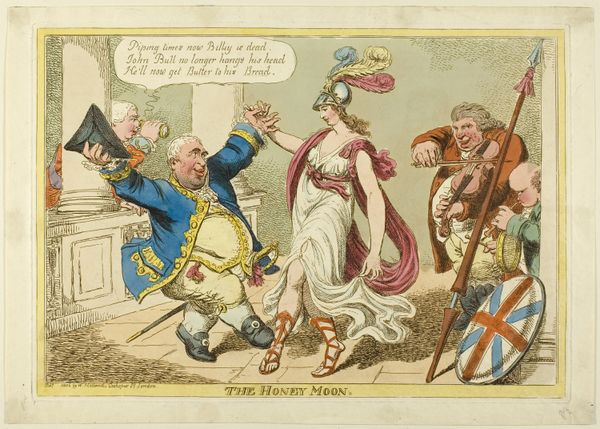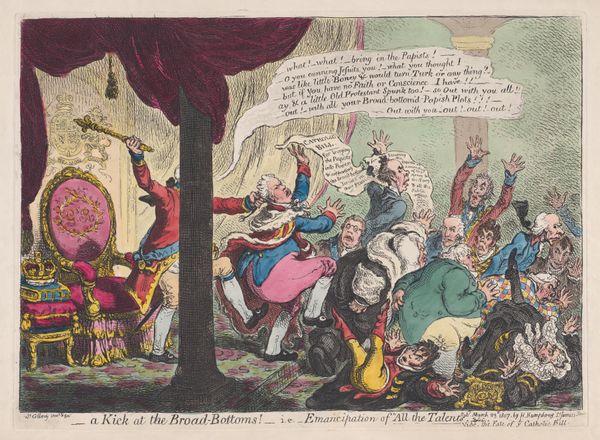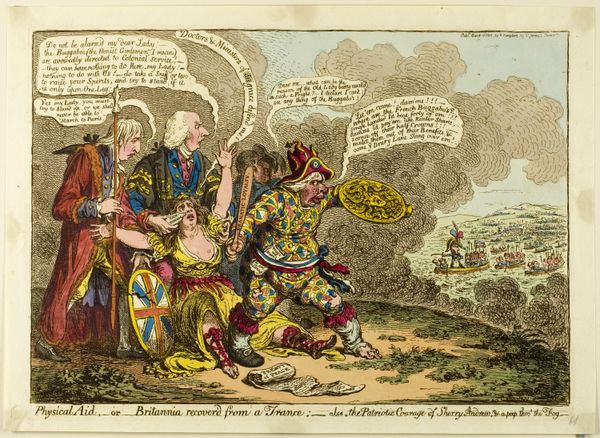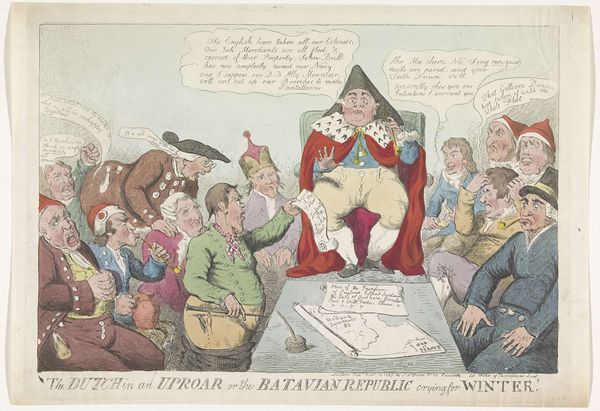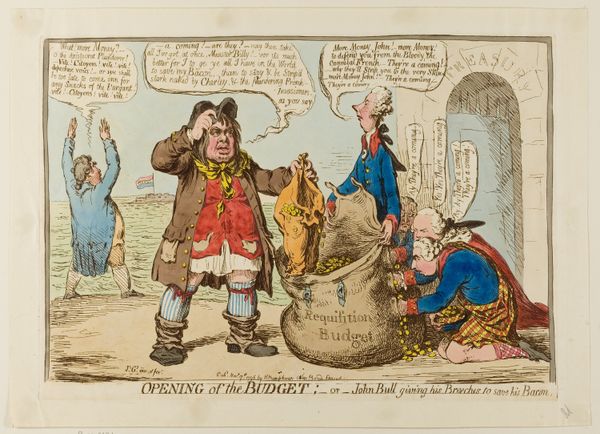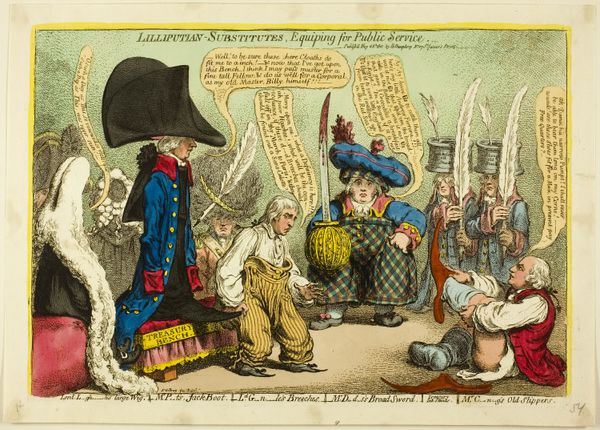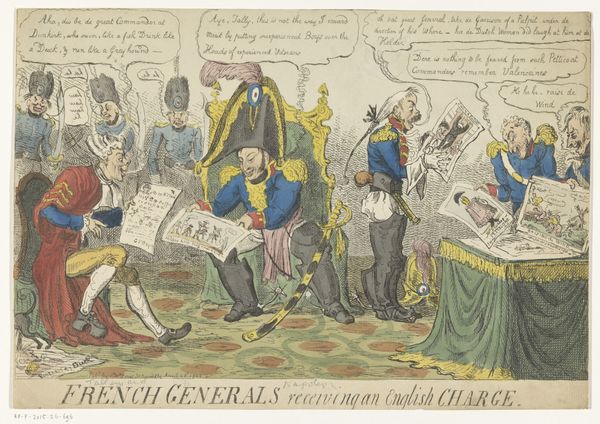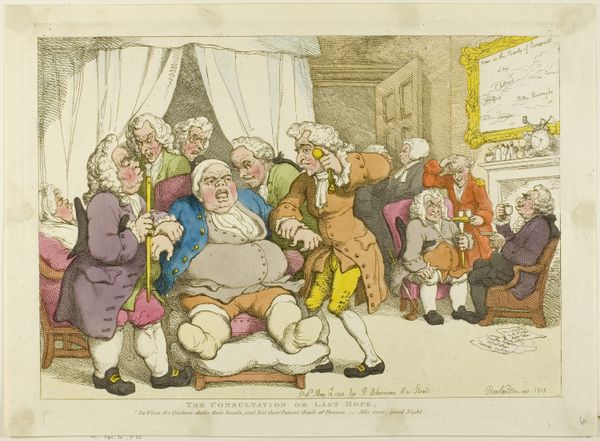
# print
#
caricature
#
romanticism
#
orientalism
#
history-painting
Dimensions: height 251 mm, width 348 mm
Copyright: Rijks Museum: Open Domain
Curator: Here we have “Napoleon as Barber for the European Powers,” a print by Charles Williams, likely dating from around 1806-1809. It’s currently held in the Rijksmuseum. Editor: My first impression? It's pure visual cacophony. A madcap scene with Napoleon wielding an oversized razor—clearly a satire, but the level of detail is almost overwhelming. It's so packed! Curator: Exactly! Williams uses caricature to comment on the Napoleonic Wars and France's dominance over Europe. The composition presents Napoleon as a barber forcefully shaving or about to shave various European leaders. The work emerges during a moment of tremendous political upheaval. We can see its cultural influence, how public opinion was swayed by printed images, with the United Kingdom often taking an anti-Napoleon stance in news, artwork, and satire. Editor: Yes, the symbolism is so layered. The oversized razor itself reads as a phallic symbol of aggressive power and domination. And the specific leaders being shaved, like the Ottoman Sultan clinging desperately to his beard and Britain, personified as John Bull, warily eyeing the scene. I find the meaning is clearly revealed through its visual storytelling of specific actions. Note the detail that he holds another smaller razor which is labelled 'For John Bull', showing the separate and dangerous tools used against that person. Curator: Precisely, Williams also incorporates popular imagery of the time, like the Turk represented is very orientalist in visual shorthand: large turban, flowing robes. We need to think of what those stereotypes do to bolster national identity, when threatened by powerful adversaries. The choice to place European figures, even monarchs, in undignified, caricatured roles makes for compelling political commentary. This work very much aligns itself with Romanticism because it emphasizes the passion of contemporary emotion, with a raw style which also has qualities of cartoon, although there's clear references to famous historical paintings in terms of tone and composition. Editor: The detail and the sheer number of figures crammed into the scene mirrors the complex political web Napoleon was weaving at that time, very appropriate of the period's history-painting influences. The emotional impact is not subtle – the print evokes both amusement and a sense of warning about unchecked ambition. I find it so fascinating to dissect these sorts of political prints. You start to understand what worried people most. Curator: A valuable point, the way this era’s political anxieties could find such immediate expression in these mass produced satirical prints gives us a fantastic lens on the period’s concerns. It’s that fusion of artistic execution and raw cultural data that always intrigues me.
Comments
No comments
Be the first to comment and join the conversation on the ultimate creative platform.



